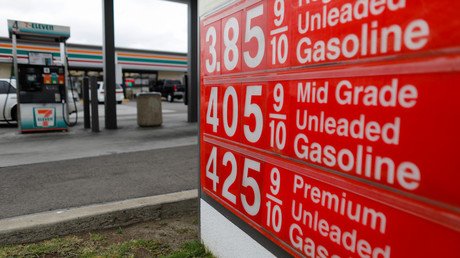Venezuela sends more crude to the US despite production woes

Despite a persistent decline in crude oil production, Venezuela has seen its exports of crude to its biggest market, the United States, climb since February this year.
In fact, between February and June, Venezuelan oil exports to the Gulf Coast refineries increased by an impressive 43 percent, according to US customs data cited by S&P Platts. What is happening?
It seems that market logic is overriding other factors. The recovery in Venezuelan exports is confined to Gulf Coast refineries, analysts note. These are equipped to process heavier grades, and their choice of supplier is limited. Mexico’s oil production is stagnating at the moment, despite ambitious plans of the new administration to raise it from the current 1.9 million bpd to 2.5 million bpd. Canada’s heavy crude production is growing, but pipeline capacity is not, so it’s difficult and costly to get more heavy crude to Gulf refineries. Venezuelan heavy is a convenient alternative.
It seems it is a convenient alternative despite earlier reports that Gulf Coast refiners have started turning back cargoes because the quality of the crude had fallen short of standard requirements. Or Venezuela has gotten around to improving this quality. It has a good reason to do so: the US currently accounts for more than 45 percent of the troubled country’s oil production. It makes sense to take care of such a major market.
"The US is currently the ATM cash machine for Venezuela," one analyst from Hedgeye Risk management told S&P Platts. This is ironic, of course, given the stifling US sanctions against Venezuela, but it nevertheless remains a fact. Despite the sanctions and the mutual hostility, the United States is Venezuela’s biggest oil market, bigger even than China, which is a staunch ally of Caracas.
Some analysts believe that as production continues to fall, so will exports. But, then again, they may not fall whatever happens to production. Even the analysts expecting exports to fall as production continues down recognize that “There is certainly an appetite for that crude in the US and that's not going to go away,” as John Auers from Turner, Mason & Company told S&P Platts.
However, there is also appetite for Venezuelan crude in China and Russia: the country’s biggest financial supporters. Some analysts identify this as a factor that could dent US imports of Venezuelan crude, alongside the degrading quality of its crude. Venezuela is in deep debt to both China and Russia, and it is repaying this debt with crude oil.
Read more on Oilprice.com: The Winners And Losers This Earnings Season
But, say analysts, Washington may decide to go ahead with the blanket sanctions for Venezuela’s oil industry that the administration has been waving around as a threat for about a year now. The chance of this happening is still slim—there is concern about aggravating an already serious humanitarian crisis—but the option is on the table. If these sanctions are imposed, Venezuelan oil exports to United States will immediately drop to zero.
Since Venezuela’s clients are only refineries on the Gulf Coast—and the biggest buyer is PDVSA’s own subsidiary Citgo—the blow to US refining will be limited. Even so, the fact that these sanctions have not been implemented yet suggests it is not a blow that Washington is willing to deal to Gulf Coast refiners, so PDVSA will continue to have a market for around half of its falling production for the time being.
This article was originally published on Oilprice.com















